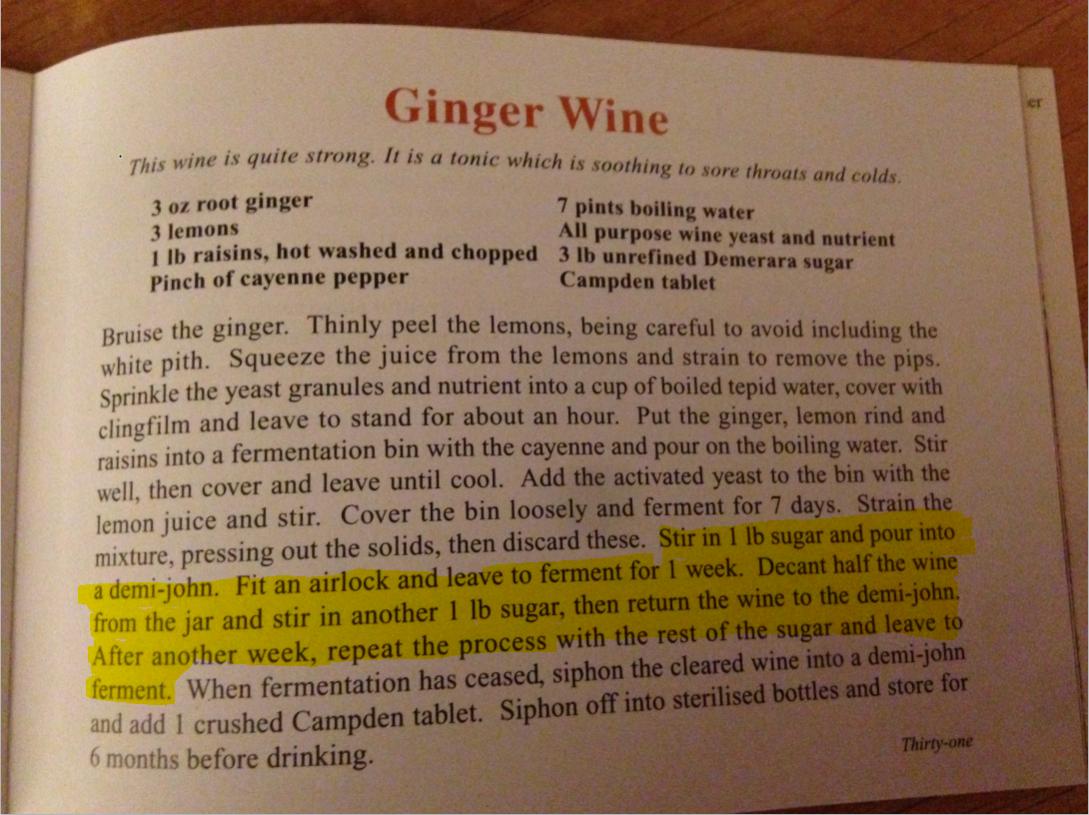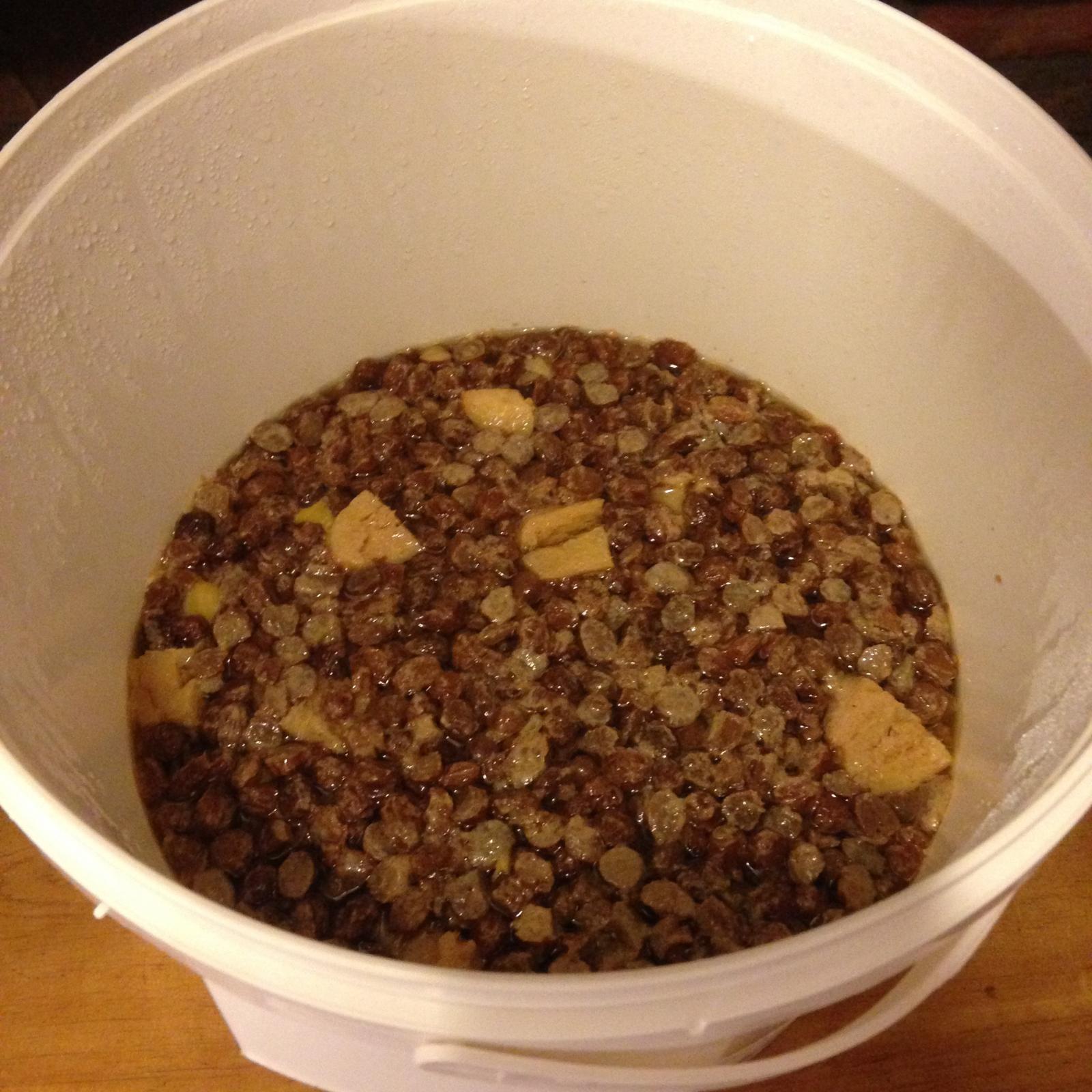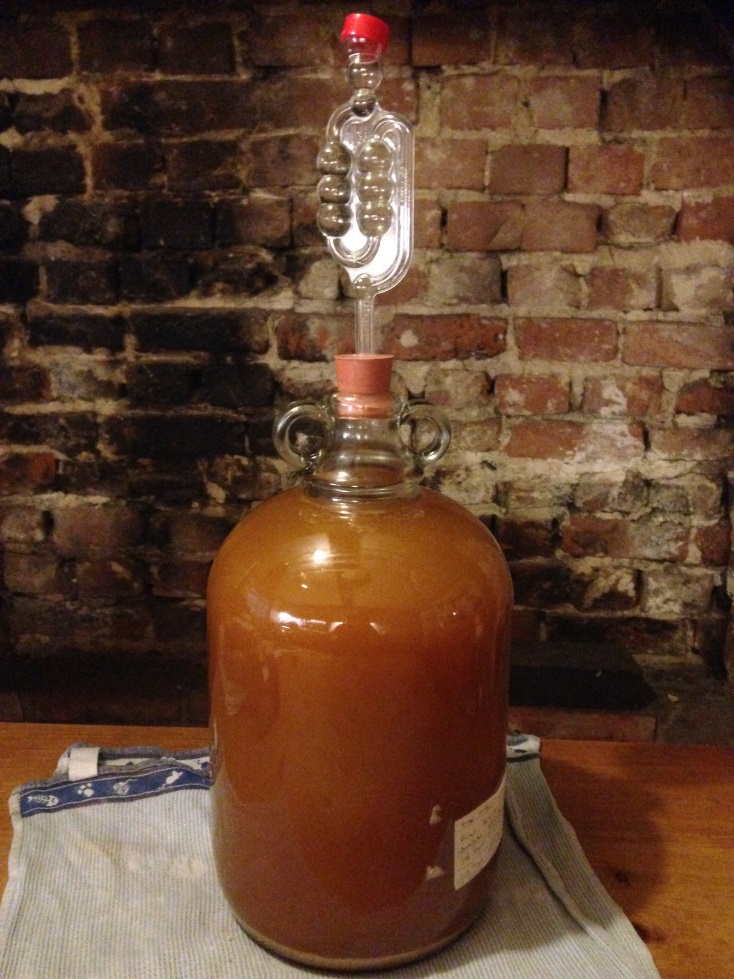thirstycat
Member
- Joined
- Jan 8, 2016
- Messages
- 6
- Reaction score
- 0
Hi all,
I'm new to the forum but have been making country wines on-and-off over the years, mostly with pretty good results. I've found a recipe for ginger wine in a book which suggests adding the sugar in stages, i.e.
Add 1lb of sugar
Leave it for a week
Add another 1lb of sugar
Leave for another week
Add the final 1lb of sugar
Leave it to ferment out
I've attached a photo of the recipe. I've seen recipes online with similar ingredients where all the sugar goes in at once.
So I have 2 questions...
1. What is the reason, if any, for adding sugar in stages?
2. Using this method, how would you calculate the ABV?

I'm new to the forum but have been making country wines on-and-off over the years, mostly with pretty good results. I've found a recipe for ginger wine in a book which suggests adding the sugar in stages, i.e.
Add 1lb of sugar
Leave it for a week
Add another 1lb of sugar
Leave for another week
Add the final 1lb of sugar
Leave it to ferment out
I've attached a photo of the recipe. I've seen recipes online with similar ingredients where all the sugar goes in at once.
So I have 2 questions...
1. What is the reason, if any, for adding sugar in stages?
2. Using this method, how would you calculate the ABV?
























































![Craft A Brew - Safale S-04 Dry Yeast - Fermentis - English Ale Dry Yeast - For English and American Ales and Hard Apple Ciders - Ingredients for Home Brewing - Beer Making Supplies - [1 Pack]](https://m.media-amazon.com/images/I/41fVGNh6JfL._SL500_.jpg)




